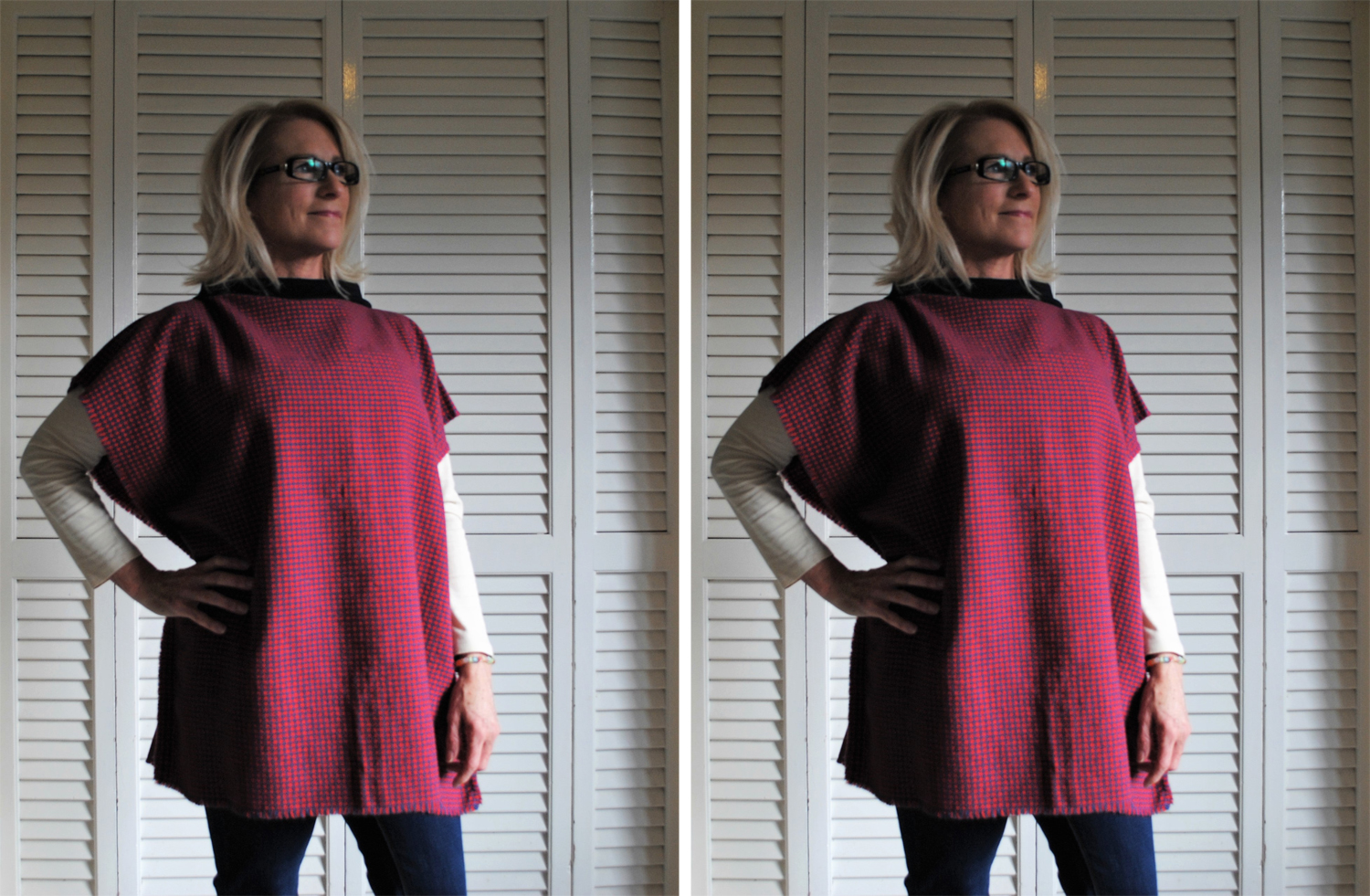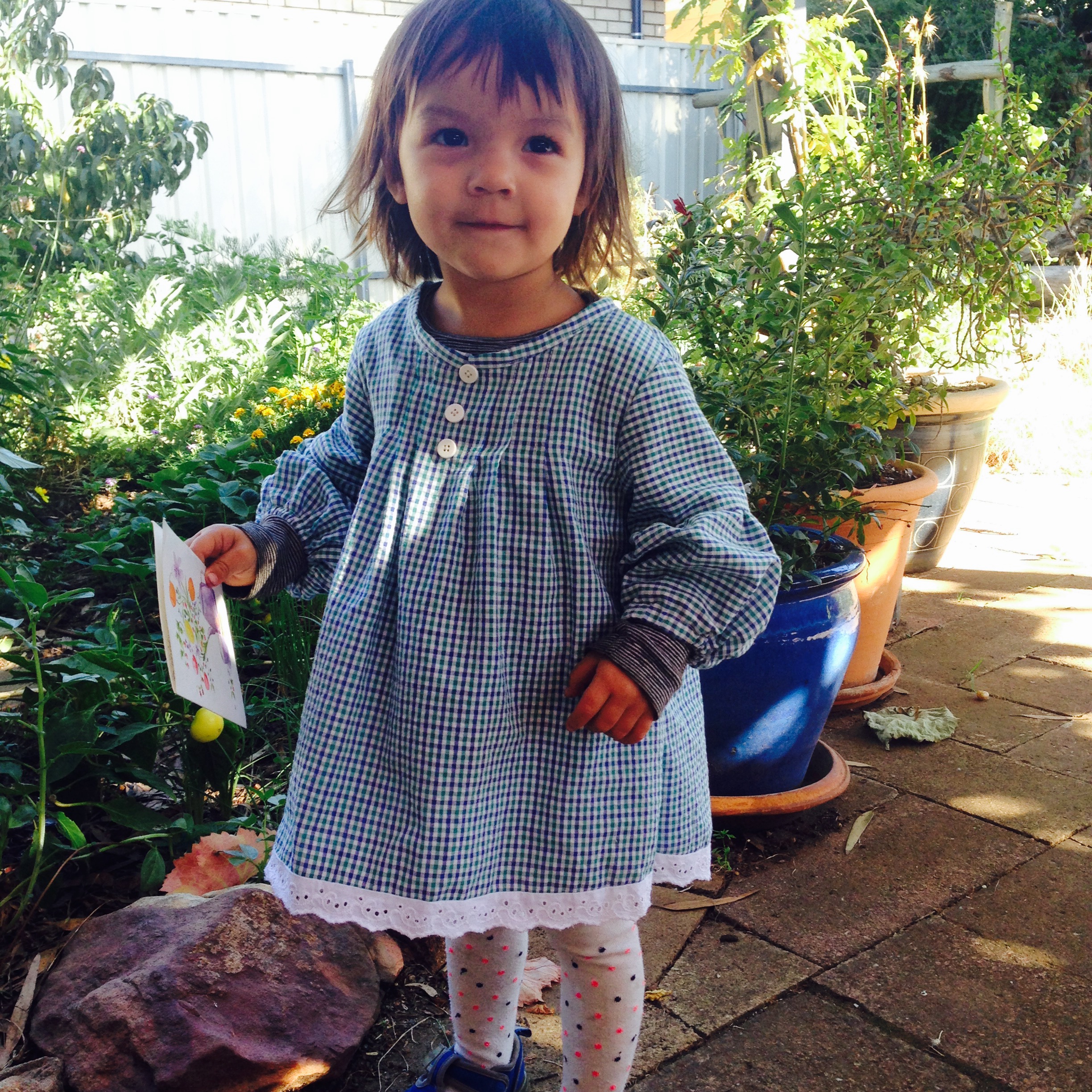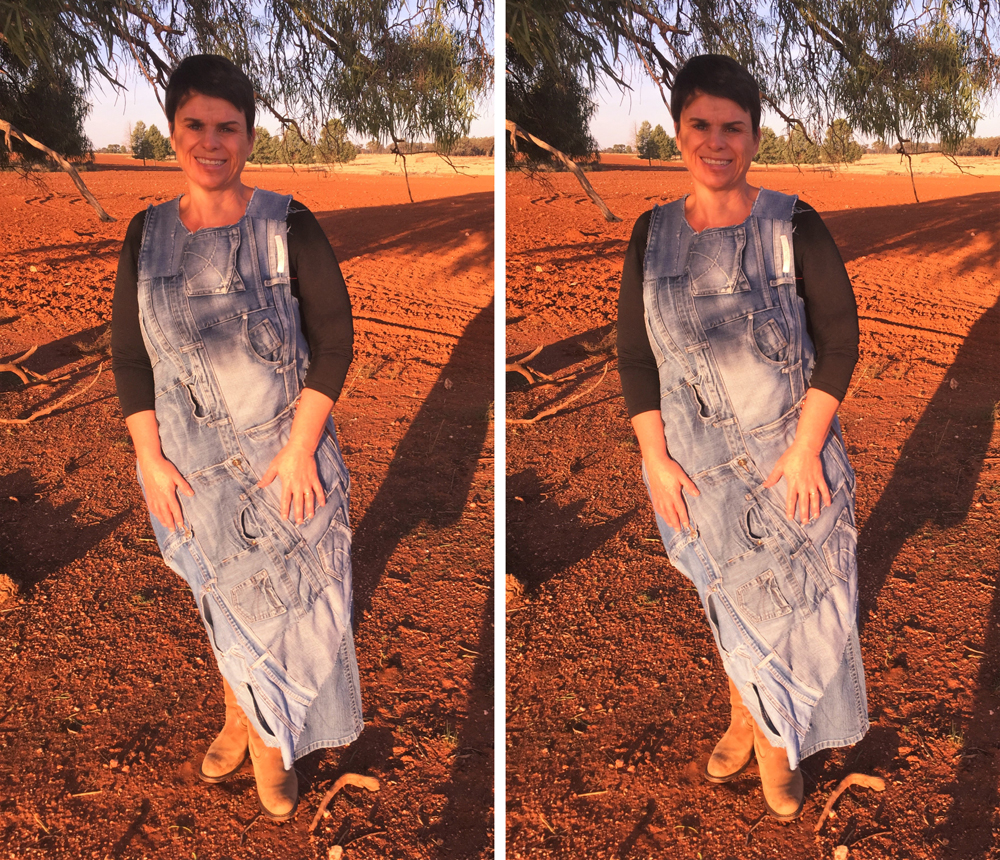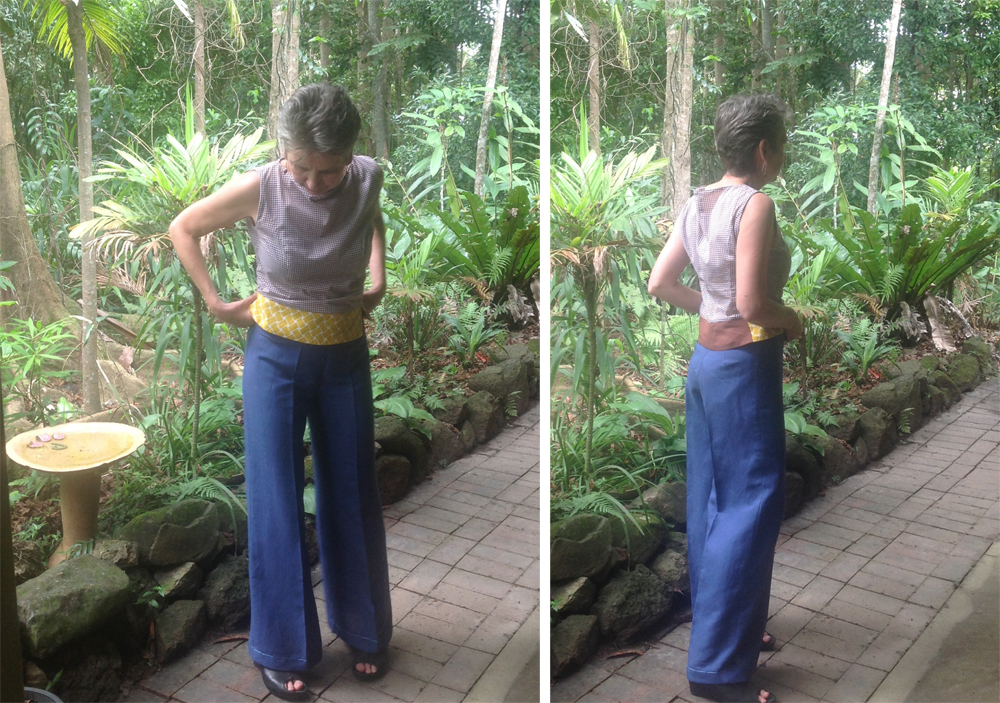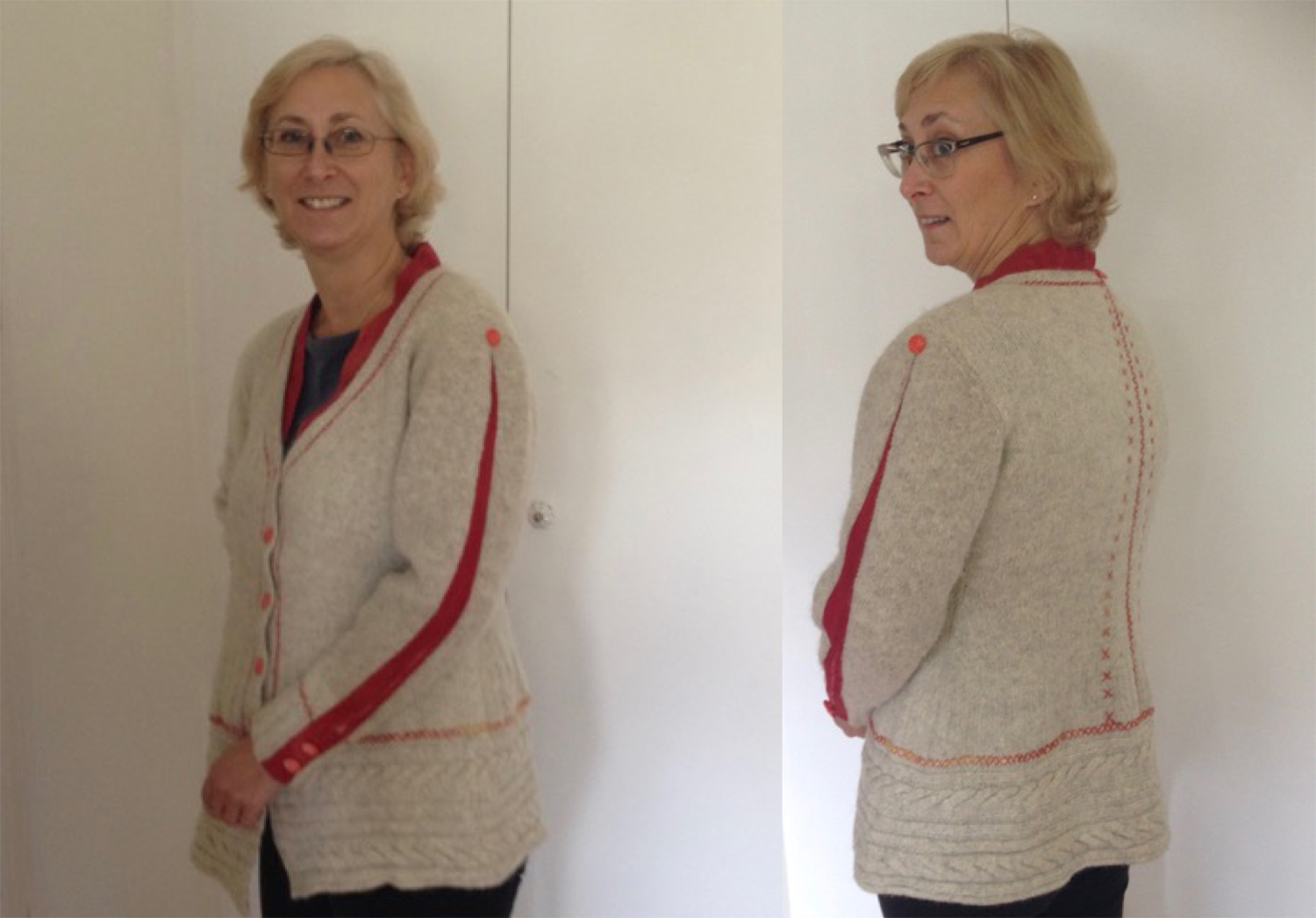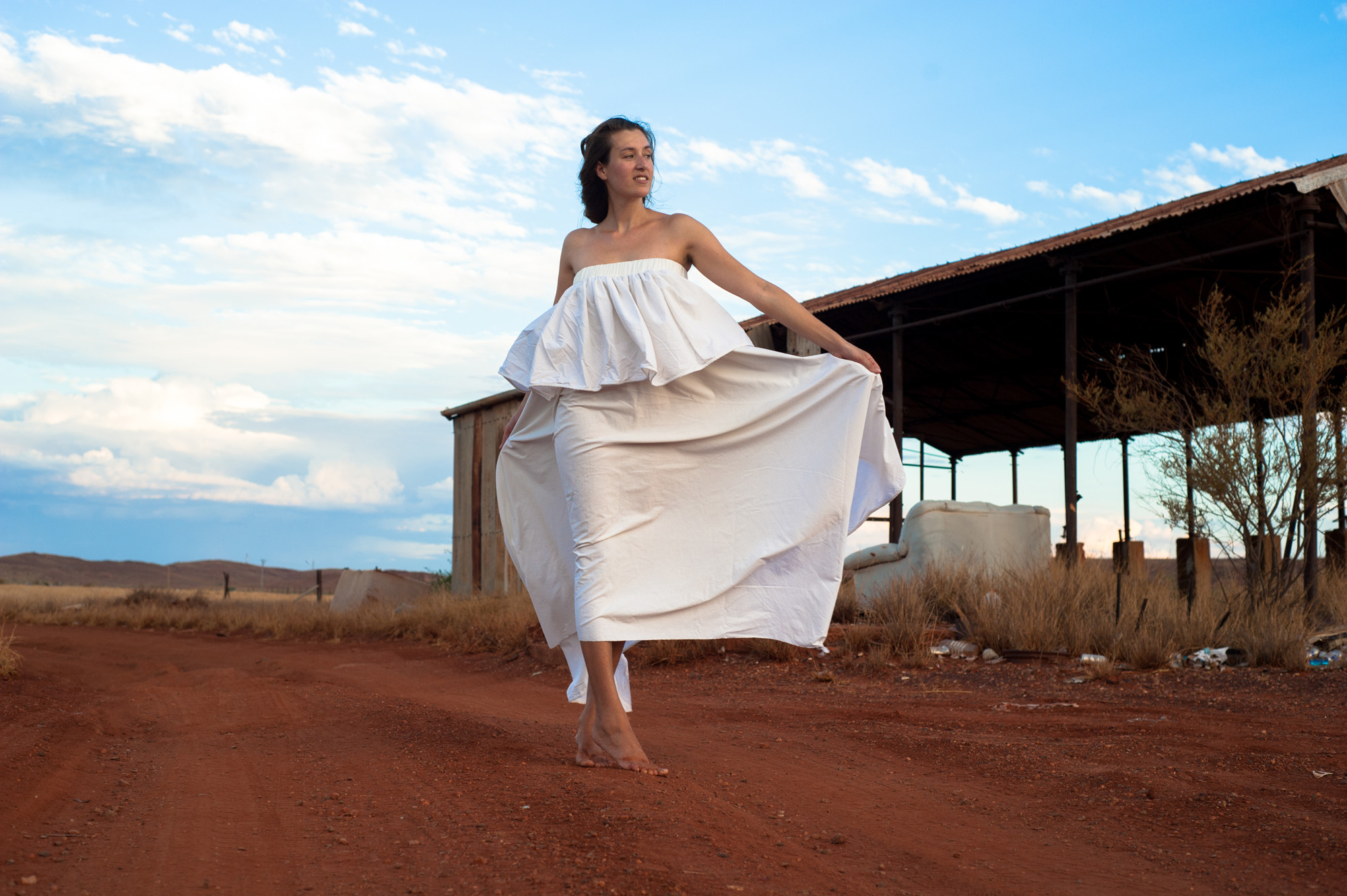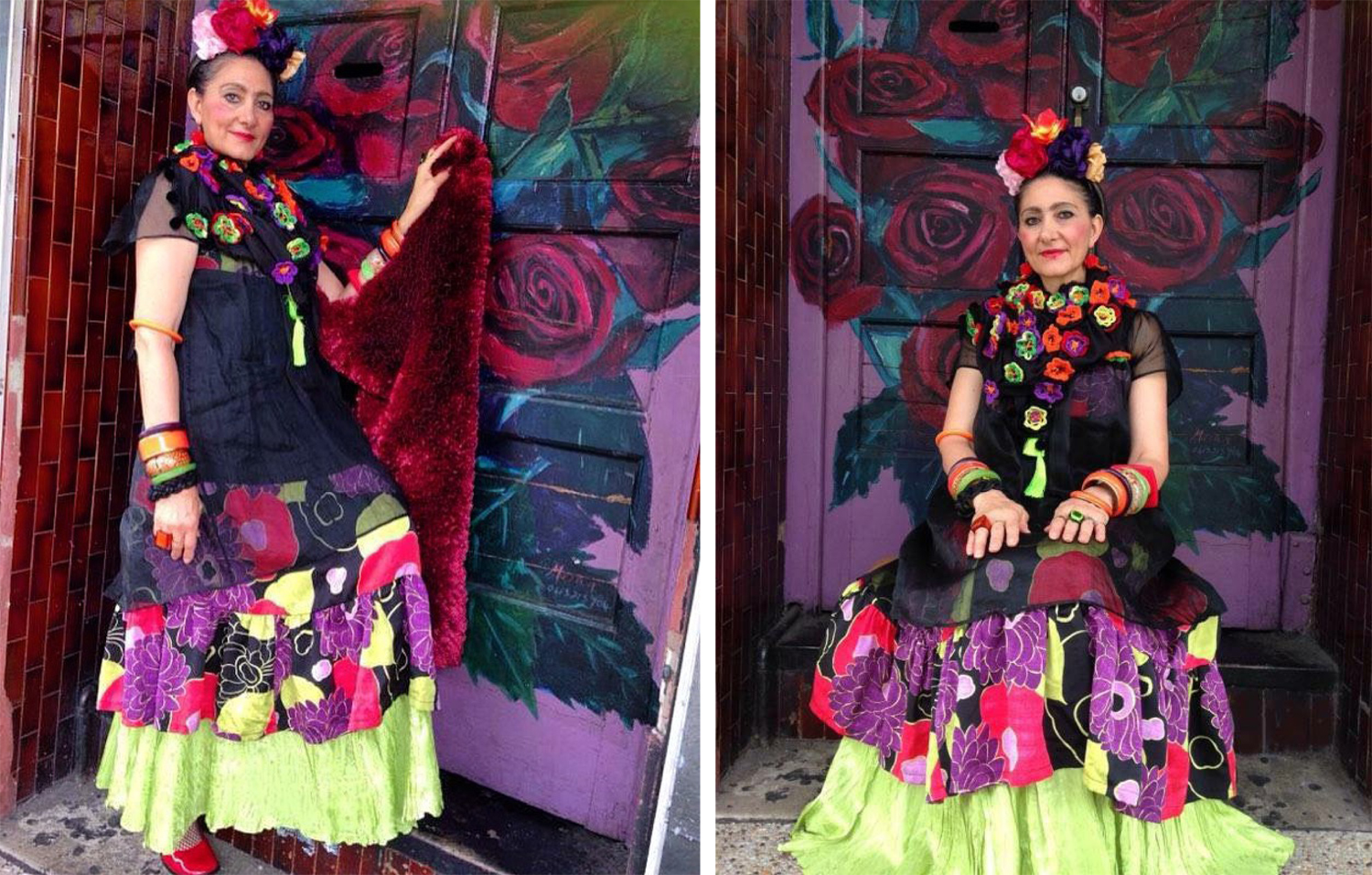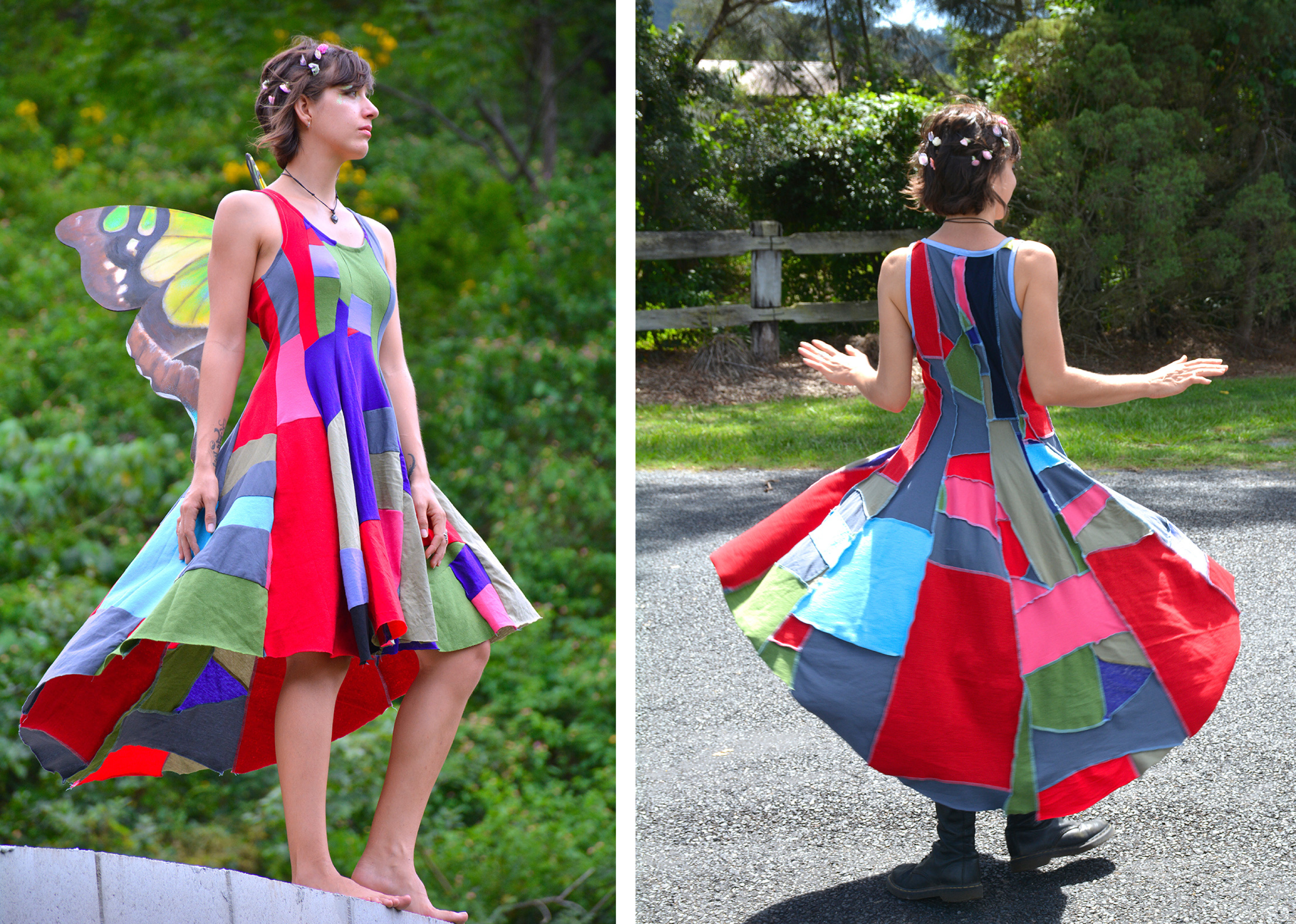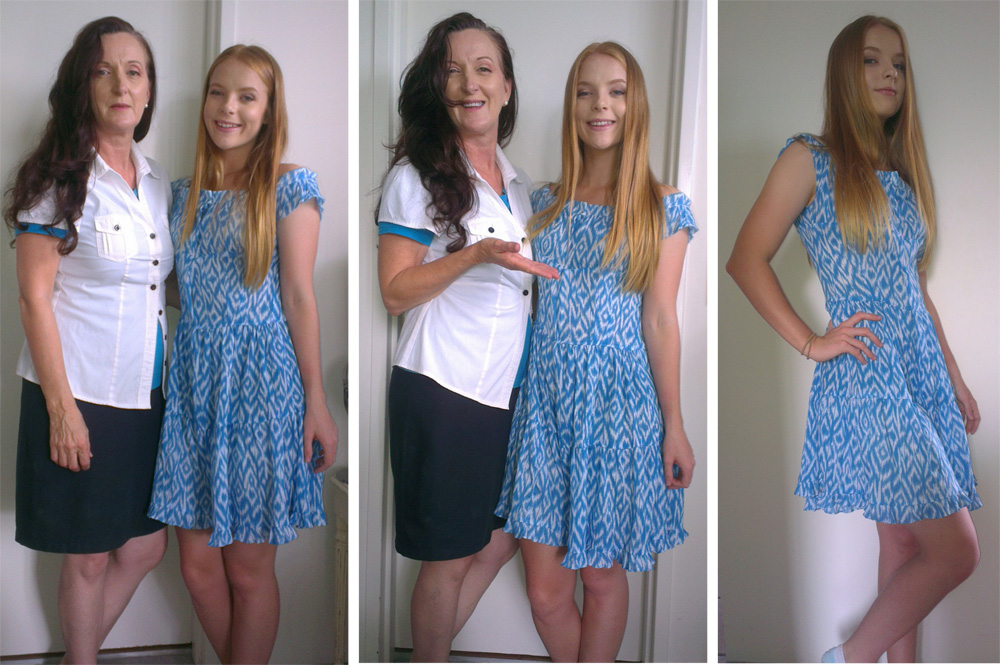Genevieve Manhal made a resolution to buy nothing new this year (except a few items of underwear when necessary) and she’s noticing even more the media stream of fast fashion that is in her face all the time, on television, in magazines and on social media. “No wonder there are so many people struggling with body image issues and the notion of not ‘fitting in’ when this consumerist image is constantly being shown and targeted at every age group,” said Genevieve who lives in the Bass Coast area of south Gippsland in Victoria.

Genevieve Manhal from south Gippsland in Victoria made this versatile pinafore/skirt for The Slow Clothing Project.
Growing up in a household that valued being sustainable and repurposing items, building your own from scratch and thinking environmentally, the idea of fast fashion has always been an issue of concern for Genevieve. “Also studying design at TAFE it was always in your face, what was in ‘trend’, what you needed to look ‘cool’ and I have always felt, even after being out of secondary school for 10 years, that a big factor with peer pressure and fitting in is by wearing ‘correct’ fashion.
Continue Reading →
